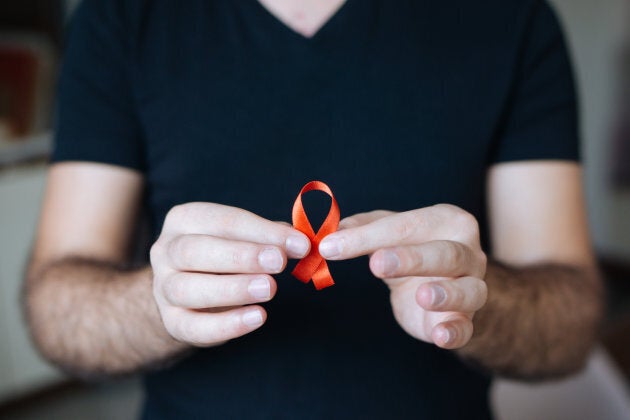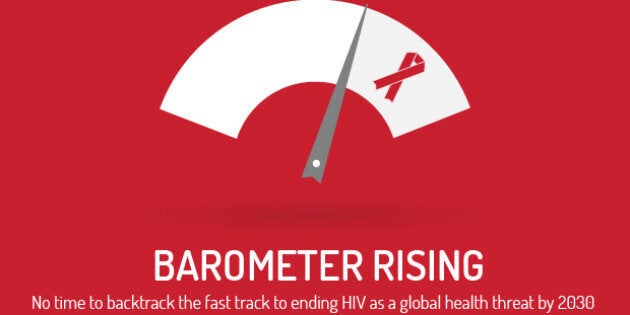By Laurie Edmiston
Having turned 60 two months ago, I know there's nothing quite like a milestone birthday to force you to get serious about your priorities and your future. The HIV response is facing our own wake-up call this Dec. 1 as we mark the 30 World AIDS Day — a milestone I never imagined we would reach when I started working in HIV 30 years ago.

I have spent more than half of my life working in the HIV response, and while our goals have remained unchanged — reducing HIV infections and keeping people healthy — they have sometimes felt lofty and long-term. Something to strive towards, but always just out of reach.
That is no longer the case. Hundreds of prominent HIV leaders and organizations have now endorsed a new consensus based on years of scientific research: a person living with HIV who takes treatment — to the point where the amount of the virus in their body is undetectable in blood tests — does not transmit the virus to their sexual partners. In short, undetectable equals untransmittable (U=U).
This new scientific consensus has tremendous implications for people living with HIV. It has the potential to ease the stigma and discrimination faced by people living with HIV, and it offers an additional incentive for people to take their treatment regularly.
But it also demonstrates that ending the AIDS epidemic in Canada is much more attainable than we previously thought. If treatment has the potential to eliminate the risk of HIV transmission, it can not only save the lives of people living with HIV, but it can also be used as a tool to prevent further infections.
It's time for Canada's leaders and policy-makers to get serious, step up and do what can be done now.
This concept — treatment as prevention — is not new. Researchers at the British Columbia Centre for Excellence in HIV/AIDS coined the term in 2006 when they published data showing that increased access to modern HIV treatments was often accompanied by a decrease in new HIV infections.
In some countries, governments took the concept and ran with it. Swaziland, the country with the highest HIV prevalence in the world, doubled the number of people on HIV treatment since 2011. Researchers announced this year that new HIV infections were cut in half over the same period.
But for this approach to work, there are two key challenges to overcome: people need to know their HIV status, and those who are diagnosed HIV-positive need to have access to treatment and care.
In Canada, we are falling behind on both of these measures. One out of every five HIV-positive Canadians doesn't even know they have the virus. Among Canadians who have been diagnosed, only three out of four are accessing treatment. Unless we do something drastically different in our approach to HIV testing and treatment in the next three years, Canada will not meet the global targets set by the Joint United Nations Programme on HIV/AIDS to end the AIDS epidemic by 2030.

As we enter what should be the final decade of the global AIDS epidemic, it's time for Canada's leaders and policy-makers to get serious, step up and do what can be done now.
Step up HIV testing campaigns. Offer HIV screening to everyone as part of routine doctor's appointments. Approve HIV self-testing kits and make them as accessible as a home pregnancy test. Establish a national pharmacare program to guarantee the right of all people living with HIV to access the treatment and care they need to stay healthy and remain "untransmittable."
Let's retire this epidemic once and for all.
Laurie Edmiston is executive director of CATIE, Canada's source for HIV and hepatitis C information.
This blog is part of the blog series: Barometer Rising: No time to backtrack the fast track to ending HIV as a global health threat by 2030 by the Interagency Coalition on AIDS and Development (ICAD) in recognition of World AIDS Day (Dec. 1). The series features a selection of blogs written by our member and partner organizations. Contributors share their broad range of perspectives and insight on the right to health within Canada and globally to critically reflect on the response to HIV knowing we are now just 2 years from the 2020 Fast-Track targets (90-90-90) and just over a decade away from the 2030 Global Goals for Sustainable Development (SDGs).
Are we on the right track or are we on the back-track?
Disclaimer: The views and opinions expressed in this blog series are those of the authors and do not necessarily reflect those of ICAD.
Follow HuffPost Canada Blogs on Facebook
Also on HuffPost: